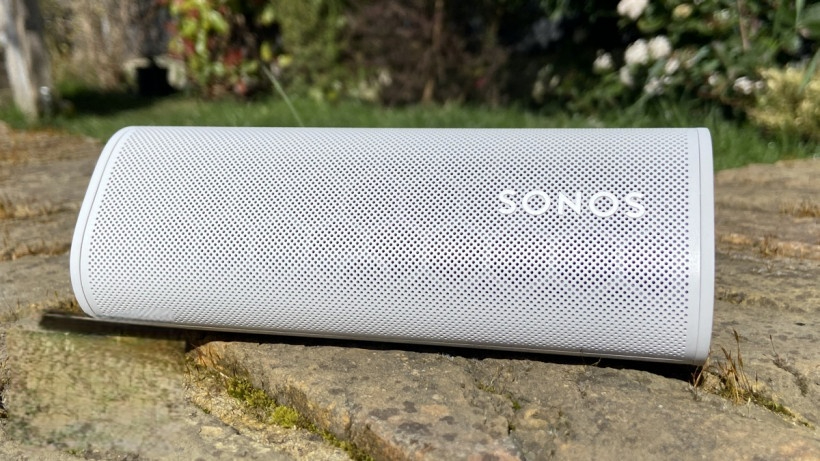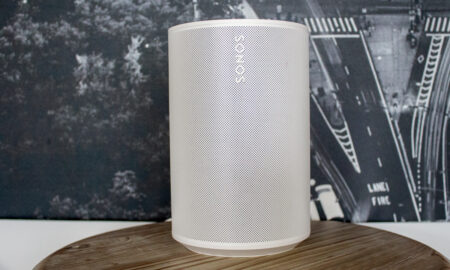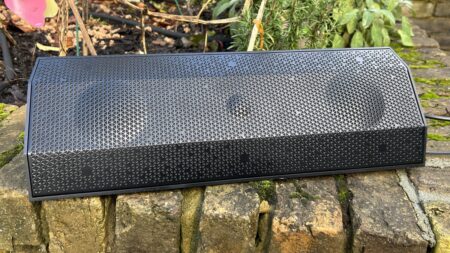Bluetooth skills set this smart speaker apart
The Sonos Roam is a great little Bluetooth/Wi-Fi/AirPlay speaker that packs in a hell of a lot of features for a very reasonable price-tag. It's certainly not the best sounding Sonos speaker (it's probably the worst, but that's not really a 'bad' thing) and one of its key selling points - Sound Swap - is a bit clumsy but, overall, it is the perfect portable companion for getting your Sonos system out and about.
Pros
- Compact form factor
- Bluetooth and Wi-Fi skills
- Rugged and waterproof
- Alexa and GA available
Cons
- Sound Swap needs work
- Battery issues with Google Assistant
- Sound quality isn't amazing
The Sonos Roam speaker broke cover last month, after weeks of rumors, speculation and leaks galore; and it’s a mini Bluetooth brethren to the Move.
Sonos’ smallest speaker to date (and cheapest too, if you ignore the Ikea Sonos speaker range), is super compact and is designed to be taken out and about.
Yes, the Sonos Move – the multi-room speaker specialist’s first Bluetooth speaker – was capable of being transported (the clue was in the name) but it is an absolute beast of a speaker (that’s also pretty pricey at £399).
Portable showdown: Sonos Roam vs Sonos Move
The £159 Roam, on the other hand, could easily be slipped into a beach bag, sports holdall or suitcase, and accompany you to the pool, picnic, gym, park… wherever you want to take it really.
Read on for our full Sonos Roam review to find out why it might just be the perfect portable Bluetooth speaker for you…
Sonos Roam: Design and build
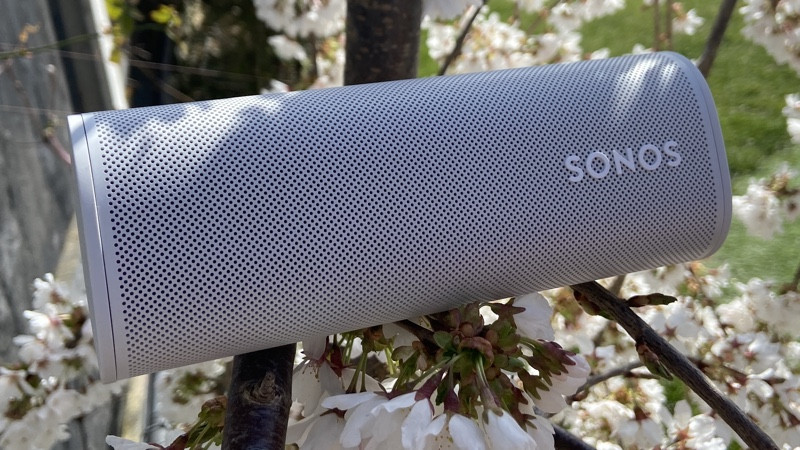
The Sonos Roam measures in at just 6.61 x 2.44 x 2.36-inches; it’s a curved triangular speaker that weighs less than a pound.
As a compact Bluetooth speaker, it works. It’s small enough to chuck in a bag, rugged enough to be placed just about anywhere – including in or around the pool – and it’s so lightweight that my 5 year-old has taken to carrying it around the garden playing the absolute worst music you’re ever likely to hear.
In comparison, the Sonos Move is 10-inches tall and weighs more than 6x what the Roam does at 6.6lbs.
Yes, the Move was Sonos’ first ‘portable’ speaker but, let’s face it, it’s only as portable as a quick carry from the house to the garden – you’re hardly likely to take the Move to the park with you.
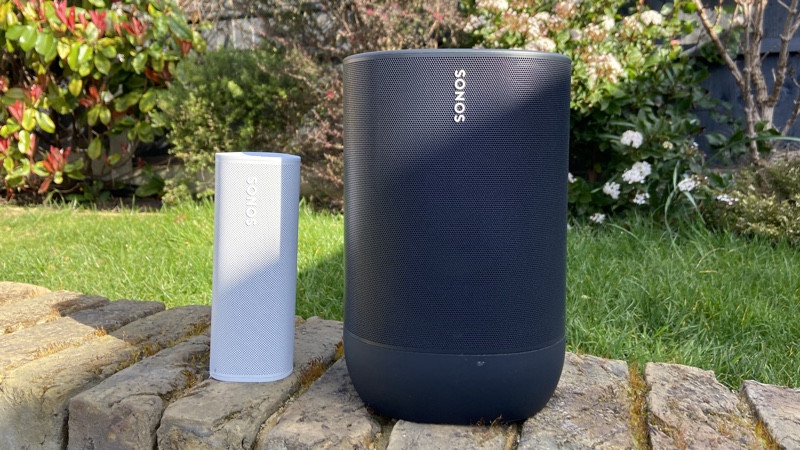
I absolutely love my Sonos Move and the versatility it gives me for parties, BBQs and so on – but the Roam is a totally different prospect.
Totally different for Sonos that is; there are, of course, a bagillion Bluetooth speakers that come in a similar shape and size as the Roam.
However, none of them slot into your existing Sonos setup as naturally as the Roam does. Sure, there are great AirPlay 2 / Bluetooth speakers that you could, in theory, hook up with your Sonos system; but you’re never going to get as seamless a solution as the Roam at this price-point.
The ends of the Roam are a rubbery, very un-Sonos-like, affair; which is obviously designed with that ruggedness in mind. My daughter has dropped the Roam a few times now and yes, it’s a bit scuffed, but it’s still in perfect working order.
At the top end are the familiar Sonos physical buttons: volume up, volume down and play/pause, and there’s also a button for switching off the voice assistant microphone – it’s your choice: Amazon Alexa or the Google Assistant – but more on that in a bit.
It’s got a 10-hour battery life and, unlike the Move, doesn’t require a proprietary charging input; it’s regular old USB-C that juices it up.
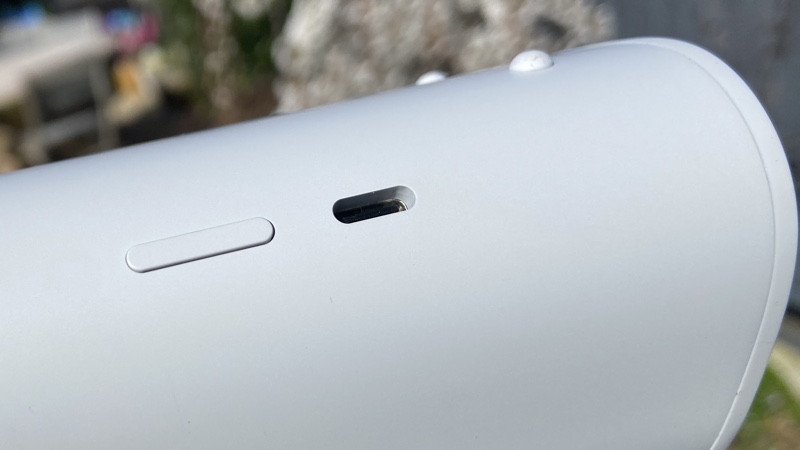
There is an optional charging dock should you wish; that’s £49 – but the good news is the Roam is Qi compatible, so you’ll be able to get a much cheaper (albeit not design-matched) wireless charger for it. The native one has a magnet though, for optimal stability (I haven’t actually tested it myself though, yet).
Any USB-C cable will work, but you do get a nice one in the box that goes in sideways for a slimmer profile when charging.
That cable matches the color of your Sonos Roam – there are both black and white/grey options to choose from.
If it’s not being used (for 30 minutes), the Roam will enter a low-power mode, and it will last up to 10 days in this state.
Sonos Roam: In use

Setting up the Sonos Roam is a super simple affair. The pairing process is actually very HomePod-esque with the a little pop up hitting your phone when you turn it on for the first time and fire up the Sonos S2 app.
From there, it’s just a case of following the instructions on your phone, which involves tapping your phone against the speaker at one point, presumably to ping over all your Sonos system, home network info and account credentials using NFC.
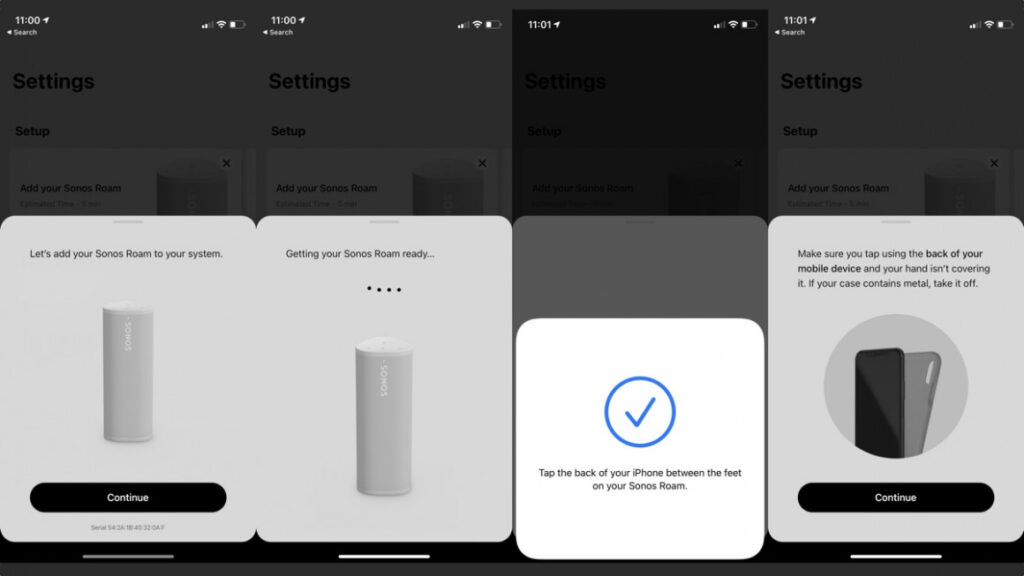
It takes less than a couple of minutes and then you’ll see the Roam showing up in your list of speakers on the Sonos app. Like the Move, the app also shows you the battery life remaining of your portable Sonos speaker.
As per any Sonos speaker, what you play through it is totally dependent on the streaming services and music libraries that you have setup. And, as per any Sonos speaker it’s very easy to group/ungroup the Roam with any other Sonos speakers on your network.
You are also able, using a new feature called ‘Sound Swap’, able to fire the audio from your Roam to a nearby Sonos speaker by simply holding down the play button.
This is a super handy feature for when you’re taking the party indoors, for example and you want the music to carry on, on your better speakers.
However, I did find this feature to be a bit hit and miss and a touch confusing; especially when holding down the play button also does on the Roam what it does on any other Sonos speaker; look for an active speaker group to join.
With the Roam, you actually hold the play button down a bit longer – until you hear a longer beep – for Sound Swap.
You’ll see the microphone light blinking if it has worked, as it actually uses the microphone to detect the best matched nearby Sonos speaker. Sonos uses the ultrasonic frequency of nearby speakers to work out what the best speaker is to Swap with. Clever stuff.
When it works, it’s great; when it doesn’t you’ll end up in a cycle of group joining/un-joining confusion. A dedicated button would have been a better idea.
Sonos Roam: Bluetooth bonus

The Bluetooth mode on the Sonos Roam is indicated by that blue LED.
Like the Move, the Roam is also capable of being a regular Bluetooth speaker, while at the same time able to become part of your regular Sonos system with its Wi-Fi mode.
However, it actually trumps the Move on the Bluetooth front as it’s able to be on both Bluetooth and Wi-Fi mode at the same time.

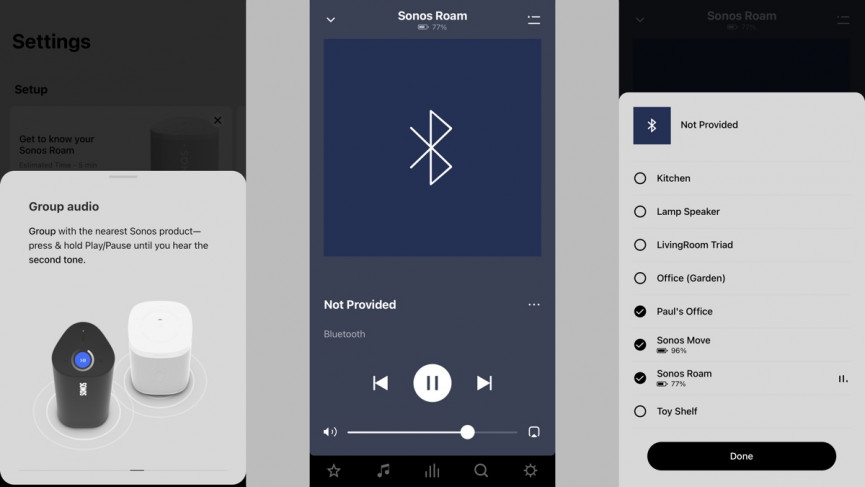
Because of that, it can ping a Bluetooth tune around your other Sonos speakers when you’re in range of them. Essentially, you can use any music app on your phone that you like to send to the Roam and then group the Roam with other Sonos speakers.
It is actually brilliant how you can group speakers; I don’t know why I expected it to not work (I’m very anti-Bluetooth anything as a rule) but it worked brilliantly.
You obviously you get no album art / track data in Sonos app, but you will be able to see that stuff from whatever app you are using to ping music to your Sonos system.
It does, of course, also provide a simple workaround for getting YouTube music playing through your entire Sonos system, as well.
As well as the regular Sonos network streaming and the Bluetooth mode, the Roam is also an AirPlay compatible speaker and it offers Spotify Connect streaming options too.
Sonos Roam: Sound quality

The Sonos Roam, like the Move, offers Automatic Trueplay. If you’re an iPhone user and have ever set up a Sonos speaker before, you’ll recall the somewhat-strange process of walking around the room waving your phone around to tune to acoustics, like some sort of audio exorcist.
Sonos has now built that technology into the speaker so it adjusts dynamically to its surroundings, registering all of the different reflection patterns of each individual space.
Sonos is keen to point out that, despite its teeny-tiny form factor, the sound quality was still a major part of the equation when the engineers were working on the Roam.
On that front there are a pair of class-H amplifiers, a custom racetrack mid-woofer and a tweeter all built in.
It’s a decent sounding speaker. Not amazing, but certainly decent for its size. It’s actually much more capable than I thought it would be; I’d liken the sound quality to be well above what you’d get with an Echo Dot or Nest Mini, but it’s not an Echo 4 or Nest Audio rival.
You can pair a couple for stereo sound, if you wish – only in Wi-Fi mode, mind. You cannot, however, use the Roam as rear speaker in a Sonos surround setup.
Sonos Roam: Alexa, Google Assistant and smart home skills

The Sonos Roam is very much a smart speaker, with both Alexa and the Google Assistant available for voice commands.
You don’t have to have either firing if you don’t want; but you can’t have both, either. You’ll need to choose one or the other.
Obviously, as these digital butlers need data, they will only be active when on Wi-Fi mode and they will, of course, have an impact on battery life.
There are particular issues when using the Google Assistant on the battery front, although Sonos tells us that an update will land soon that should sort that out.
I’m not going to go over what you can do with Alexa or the Assistant on board (i.e. anything any other smart speaker does) but I will say that the microphone isn’t quite as good at picking up commands as Sonos’ other mart speakers – the One, Arc, Move and so on.
Maybe it’s the smaller profile but I did find myself having to repeat commands on a few occasions. But, I’ll be honest, I only enabled Alexa for the sake of this review; it’s not a feature I really need on a portable Sonos speaker – more nice to have than need to have.
The Roam is IP67 rated, which means it’s fully dustproof and waterproof in up to one meter of water for up to 30 minutes; so a bit of rain or a splash from a pool shouldn’t do it any harm.
And it’s also, therefore, a decent bathroom option for anyone wanting to get their Sonos system extended to that room of the house.


